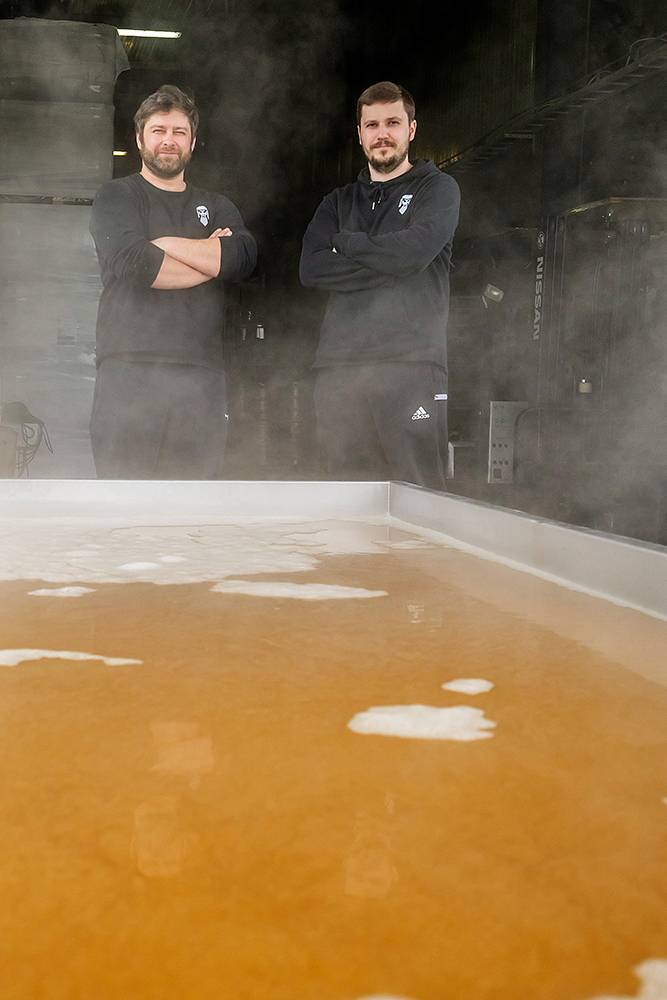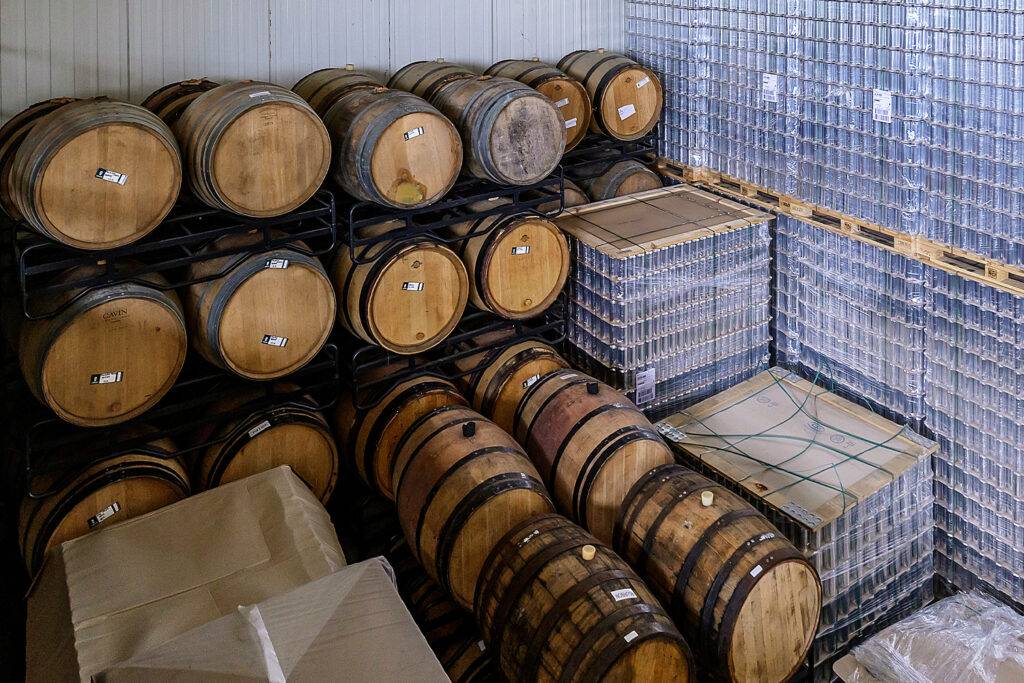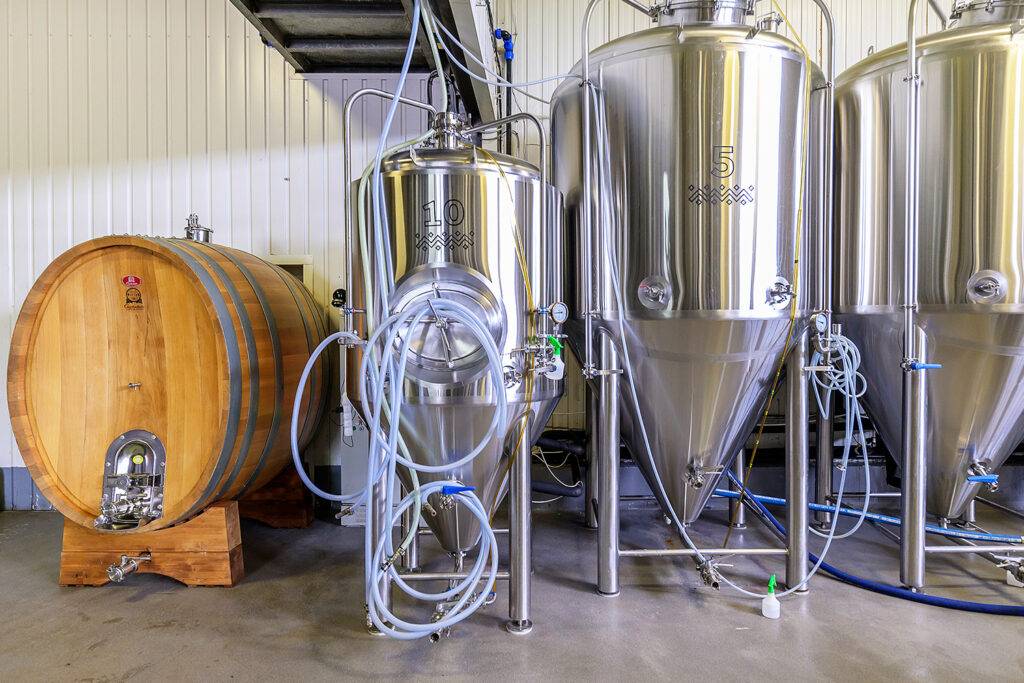BEER AND WOOD. PART 2
Grown in a Barrel, Nourished through the Bung.
Continuing the theme of the relationship between beer and wooden vessels, the next point to highlight is the wooden barrel's ability to let the beer inside it breathe a little. Through the wooden walls of the barrel, the beer has limited but continuous access to oxygen.

Many brewers in Central Europe and the British Isles fear the touch of oxygen to their beer like the devil fears the cross. Apart from the yeast propagation phase, when a sufficient amount of oxygen is necessary in the wort or yeast propagation tank, additional oxygen exposure during fermentation, filling, and storage is undesirable for almost all ales and lagers.
Oxygen spoils the hop bitterness structure, imparts a cardboard-like stale flavor to the malt extract, and turns the beer's color greyish.
An exception is the always adventurous Belgians, whose brewing tradition is so rich that it includes seemingly contrary principles.
For beers of spontaneous fermentation, even the wort is unusual – high in protein and starch, boiled with hops specially ventilated to remove all aroma, and instead of quickly cooling it in a sterile environment before adding the yeast, these beers are left "overnight" in large open vats, almost under the open sky, to be inhabited by the local yeast and bacteria present at that particular time and place. Mostly, these will be genera like Saccharomyces, Brettanomyces, and Lactobacillus.
While Saccharomyces metabolism, apart from the initial stages, indeed does not favor the presence of excess oxygen, Brettanomyces can develop certain characteristic nuances with just a slight presence of oxygen – the spicy horse blanket, a touch of acetic acid, and a variety of esters and phenols. Therefore, the best way to provide Brettanomyces and Lactobacillus with a controlled amount of oxygen is through the walls of a wooden barrel. Especially since these beers often spend several years in wooden barrels, slowly fermenting until they reach the glass. Consequently, the only beer industry sector that did not abandon the use of wooden barrels for fermentation and aging in the mid-19th century were the spontaneous fermentation specialists along the banks of the Lambic River, near Brussels.

Another aspect that makes wooden barrels particularly suitable for this style of beer is that barrels cannot be washed. Wood is porous, so the beer's inhabitants – a diverse group of various yeast strains – do not completely leave the barrel along with the beer. The rear guard remains in its positions, in the wooden pores, patiently waiting for the arrival of the next sugary wort, where the strains will continue to flourish.
If beer from the barrel has an unpleasant taste, the barrel is dismantled; the inner surface of the staves is shaved down to fresh wood, reassembled, and re-charred. Such a barrel is called a renovated barrel or a barrel after major repair.
The barrel has fresh vanillin from the heat treatment, and there is no rearguard from the previous occupants. Our 2000-liter wooden vessel, purchased from Italian coopers in the spring, had undergone such a process.
Since our "Kocene" with the number 13 was ready to start a new life, we paid special attention to both the first wort to be introduced into the barrel and the potential yeast and bacteria cocktail that would establish their rear guards in the barrel's wooden pores for the next decades (yes, in the beer industry, a wooden vessel can last up to 100 years without capital repairs if properly maintained), laying the foundation for the flavors of the beers to come from this barrel.
 Below is a detailed description of "Kocene’s" restored innocence loss:
Below is a detailed description of "Kocene’s" restored innocence loss:
• We sacrificed one of our most promising aged barrels – a 2-year-old spontaneously fermented beer caught in the Eimuri forests – 225 liters with our top-tier coolship beer.
• We brewed fresh wort, rich with forest yeast delicacies – proteins and unconverted starches – which we left to cool in a vat under the open sky, to be inhabited by local Eimuri yeasts. This was done during the waxing moon, around Ūsiņi time, traditionally considered a period when nature, including yeasts, awakens after winter dormancy.
• We added a pail of slightly fermented and thermally untreated organic honey from Latgale, which, collected a bit early, had a slightly lower sugar concentration, allowing the wild yeasts brought from the flowers to gain a foothold.
• Into the now cooled wort in the vat, we threw juniper branches. In our Baltic Sea region, juniper has long been associated not only with warding off evil spirits but also widely used in the brewing process, such as storing yeast between brewing sessions, using juniper branches as a mash filter at the bottom of the lauter tun, and as a flavoring.
• Overall, we have dedicated yeasts from four different sources to our Kocene: Eimuri 2020, Eimuri 2024, Latgale honey, and wild yeasts from juniper.
What will come of it, we will find out at the end of summer, when we might offer a few barrels of Kocene’s firstborn at its birthday celebration.



